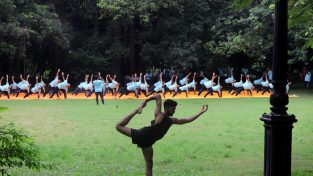Il sole su Ramses II
Succede solo due volte l’anno, il 22 febbraio e il 22 ottobre. Il sole illumina per 20 minuti l’interno della tomba di Ramses, proprio sull’effige del faraone. È uno degli esempi più incredibili del legame tra architetura e astrologia, tipico degli antichi egizi, perché tradizione vuole che Ramses sia nato il 22 febbraio e che sia salito al trono il 22 ottobre. Il sole quindi è visto come un modo per ridonare la vita e la carica all’imperatore. Il tempio di Ramses si trova nel sito archeologico di Abu Simbel, nell’alto Egitto, patrimonio Unesco dal 1979. Accanto, più piccolo, si trova anche il tempio della moglie Nefertari. (foto Ap)


















